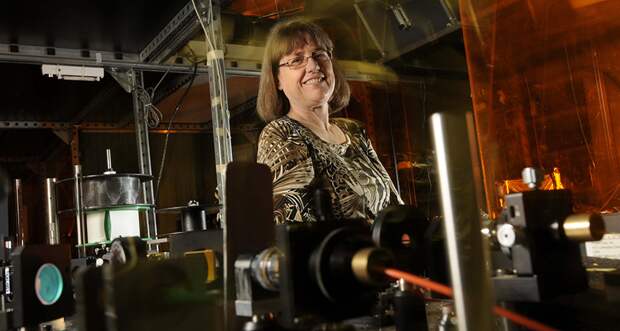Author: Emily Conover / Source: Science News for Students

Two major discoveries in laser science have proven to be more than just tricks of light.
They allow scientists to tackle a range of previously impossible tasks. And in appreciation for what these advances offer, three of their discoverers will take home the 2018 Nobel Prize in physics.The trio will share 9 million Swedish kronors. That’s equal to a bit more than $1 million.
Half will go to Arthur Ashkin for his work on laser-based tractor beams. He pioneered their development while a physicist at Bell Laboratories in Holmdel, N.J. These beams are known as optical tweezers. They can manipulate small, fragile items — without hurting them. Such tiny tweezered objects can include viruses and bacteria.
The other half of the prize went to two physicists who created intense, short bursts of laser light. Gérard Mourou and Donna Strickland produced these powerful laser pulses. They used a process now known as “chirped pulse amplification.” Other researchers would ultimately harness the technique for such applications as laser eye surgery.
The award marks only the third time a woman has been awarded a physics Nobel. (Marie Curie was the first, in 1903, for her research to explain nuclear radiation. Sixty years later, Maria Goeppert Mayer won it. She made discoveries related to the structure of atomic nuclei.
)
About those tweezers and bright, bright beams
Individual particles of light are called photons. Scientists had known that the pressure exerted by photons can push objects around. Ashkin’s work took advantage of that. By focusing a laser beam just so, he realized that other small objects could be trapped and moved around. Ashkin’s first paper on optical tweezers came out in 1986. Since then, the technique’s popularity has exploded.

Philip Jones is a physicist at University College London, in England. Ashkin’s Nobel was “a thoroughly well-deserved and long-overdue award,” he says. Today, Jones notes, hundreds of labs across the world — including his own — perform work that relies on optical tweezers.
Such systems find use in a broad range of applications. These include testing how DNA stretches and…
The post Dazzling laser advances bring physicists a Nobel Prize appeared first on FeedBox.